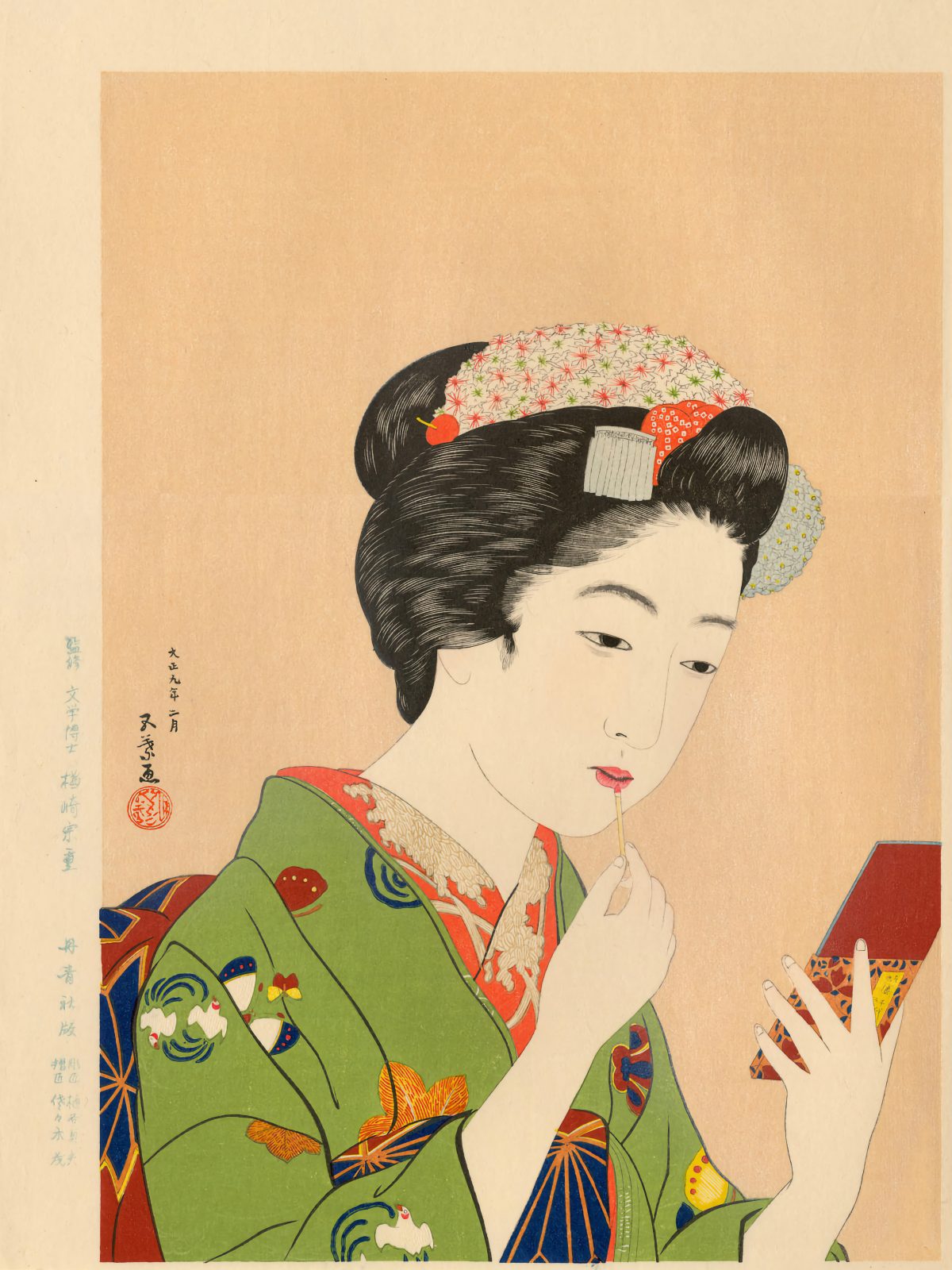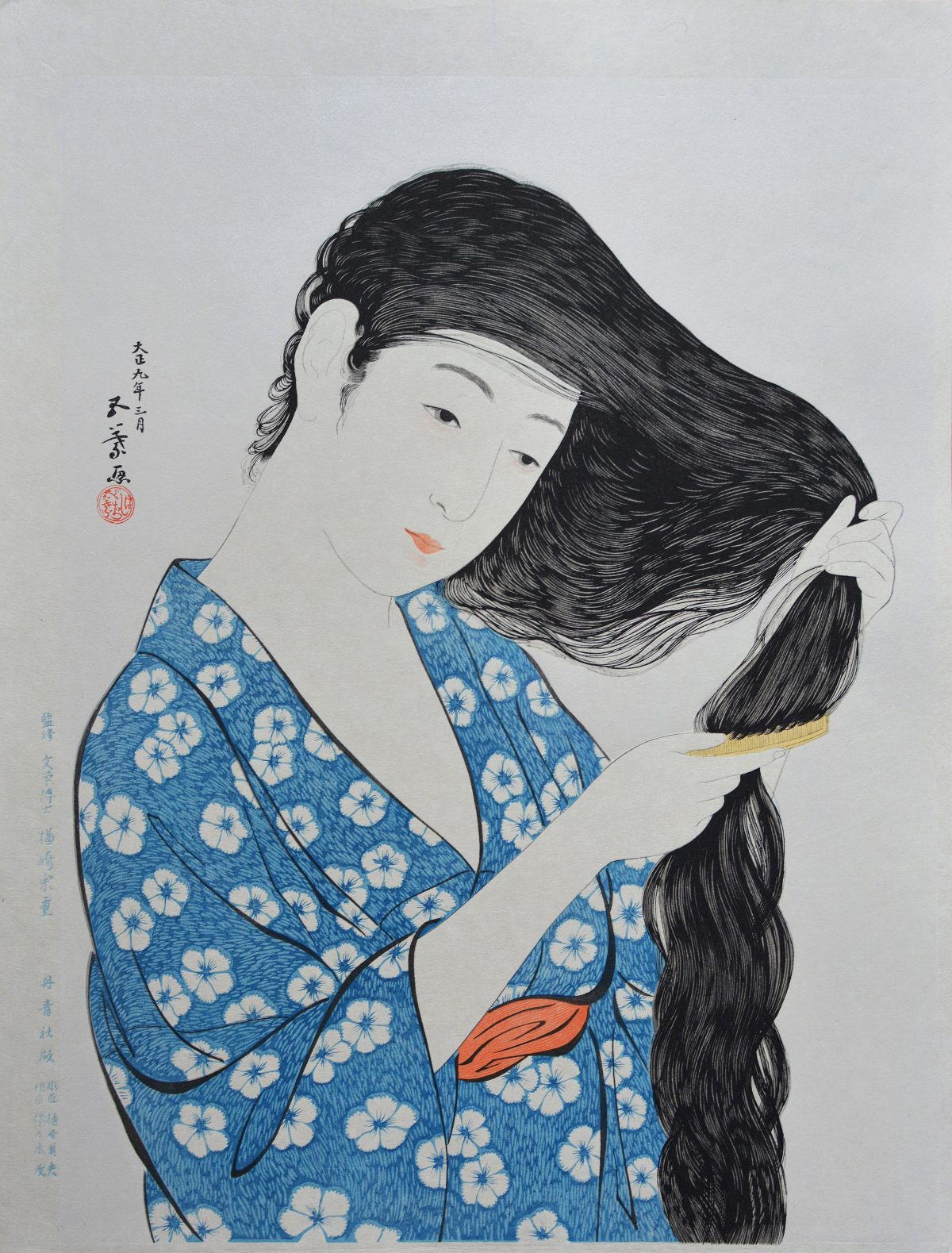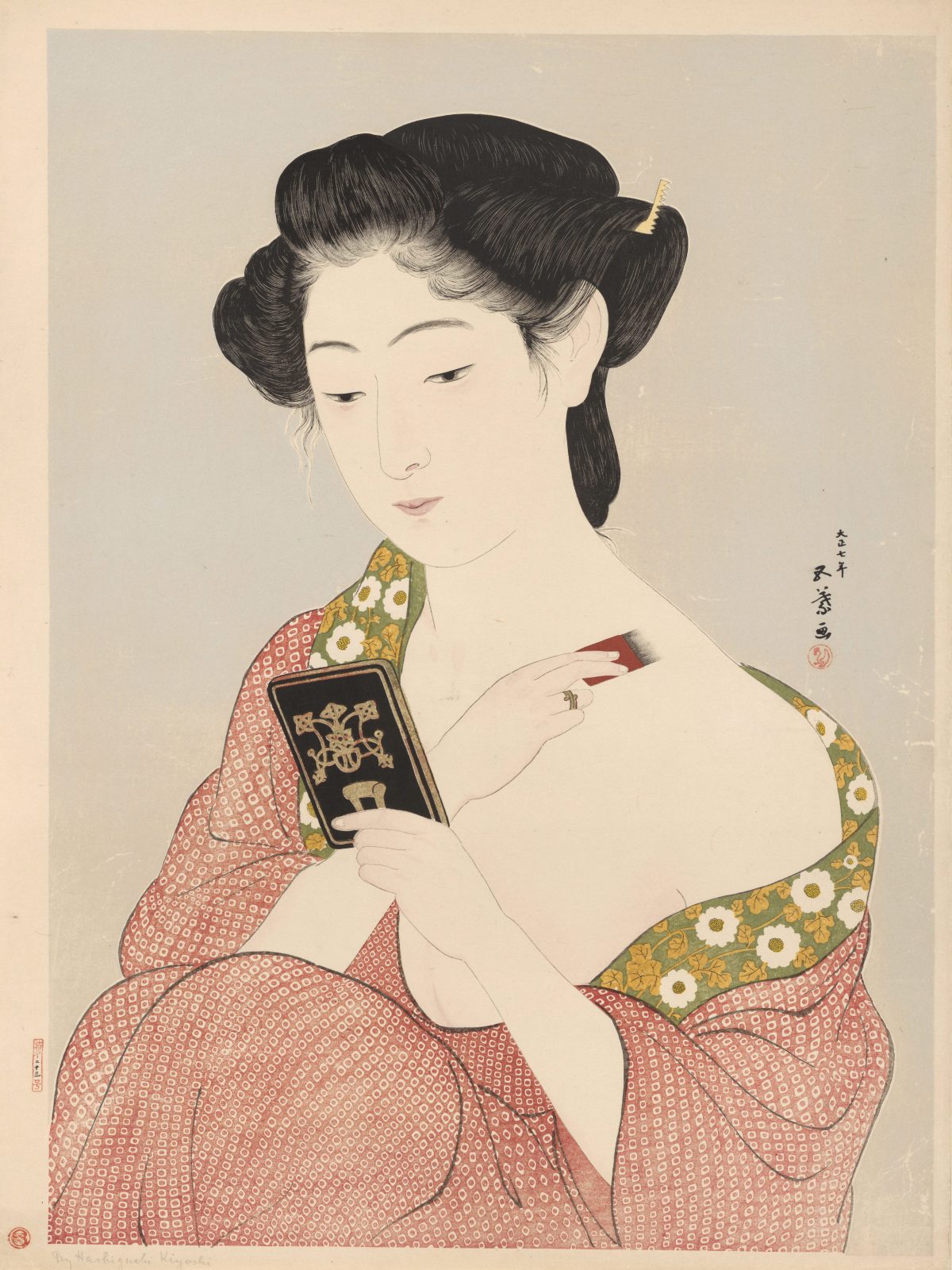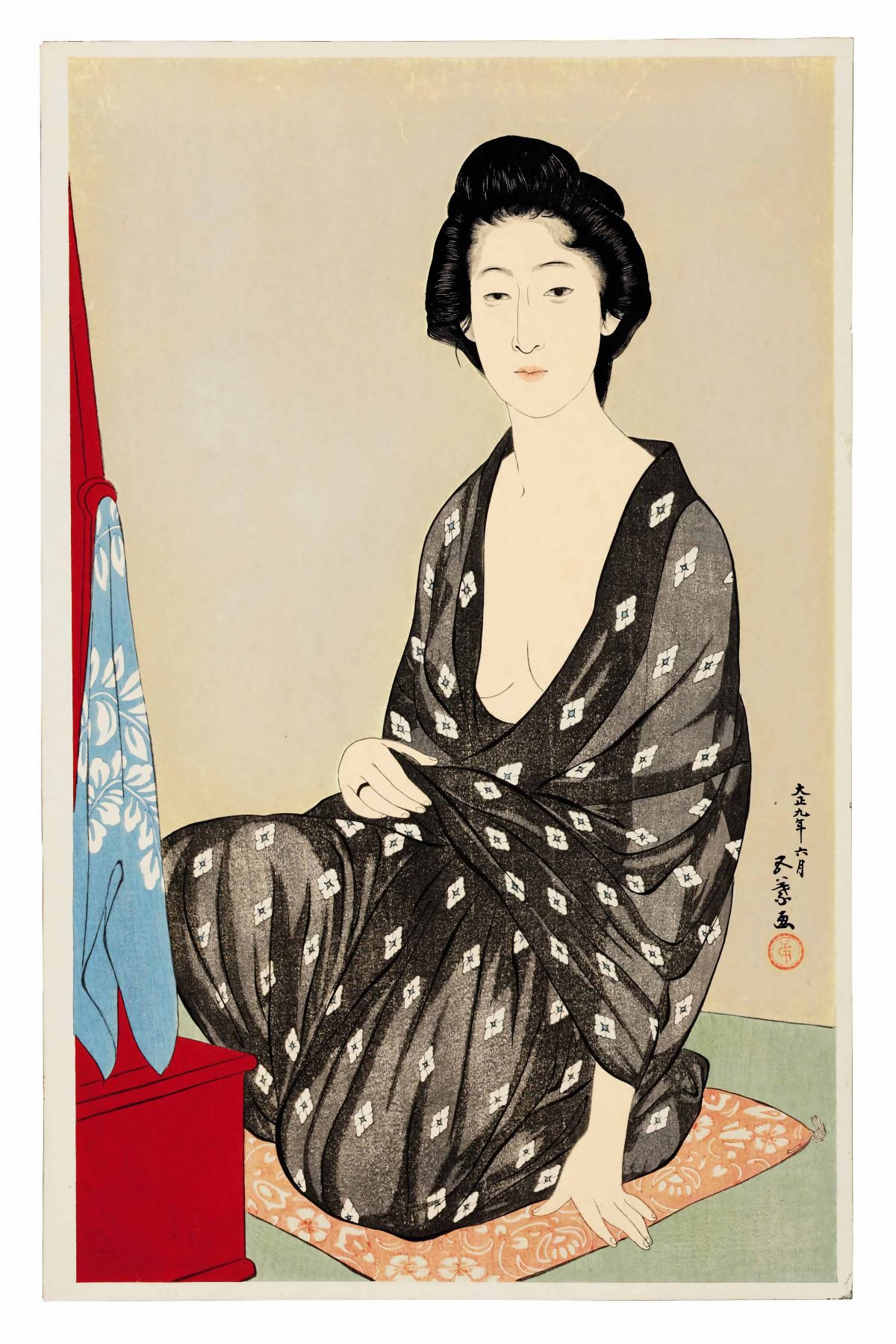In late 1920 the Japanese artist Hashiguchi Goyō’s longterm health problems escalated into meningitis. He was able to look after the process of his last print ‘Hot Spring Hotel’ from his deathbed but was unable to finish it personally and he died in February 1921 at the untimely age of 41.
Hashiguchi was born Hashiguchi Kiyoshi in the Kagoshima Prefecture in the south west of Japan. His father Hashiguchi Kanemizu was a samurai and amateur painter in the Shijō style (it focuses on Western-influenced objective realism although using traditional Japanese painting techniques). His father must have quickly realised his son’s artistic talents and hired an art teacher for him in 1899 when Kiyoshi was only nine. While attending the Tokyo School of Fine Arts, from which he graduated best in his class in 1905, Kiyoshi took the name of Goyō – chosen because of his appreciation of the five needle pine in his father’s garden.
Prints of his work are now available in the Flashbak Shop.
In 1907 Goyō won recognition for an ukiyo-e (sort of translates as “picture[s] of the floating world” and a genre of Japanese art which flourished from the 17th through 19th centuries consisting of woodblock prints and paintings of subjects such as female beauties, actors and sumo wrestlers) oil painting in the first Bunten show (a famous state-controlled, juried art exhibition), but generally appreciation of his paintings in this and subsequent shows , much to Hashiguchi’s disappointment, was lacking. After recognition for an ukiyo-e poster designed for the Mitsukoshi department store. Goyō became a serious student of ukiyo-e and studied books, originals and reproductions. He was especially interested in the great classical ukiyo-e artists and wrote several articles about Utamaro, Hiroshige and Harunobu. From 1914, while frail and suffering from beriberi (a medical condition where there is a serious lacking of vitamin B1, he contributed articles on various ukiyo-e studies to Art News (Bijutsu-shinpō) and Ukiyo-e magazine.
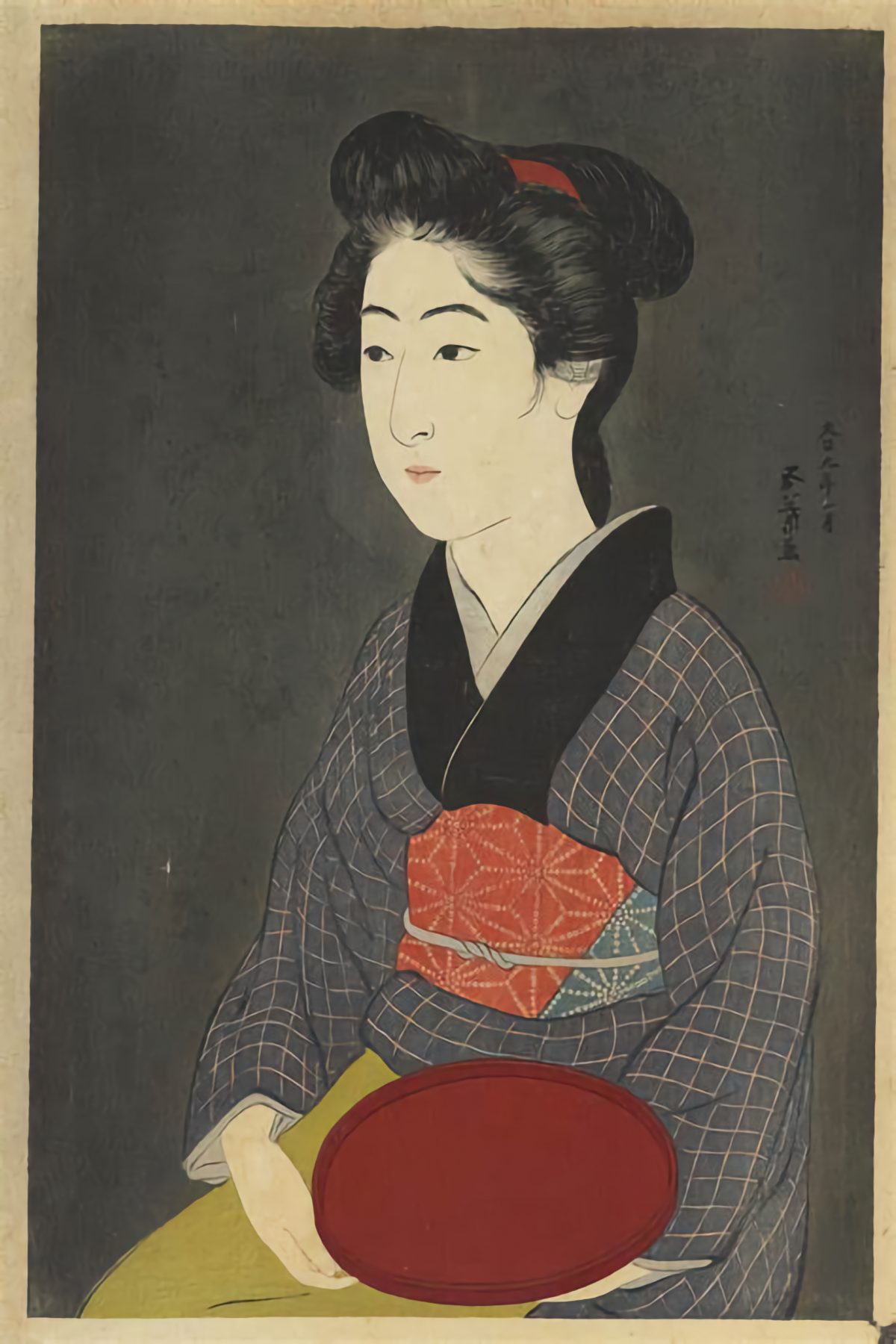
HASHIGUCHI GOYO (1881–1921) Waitress with a Red Tray (Portrait of Onao, a Maid at the Matsuyoshi Inn, Kyoto) 1920
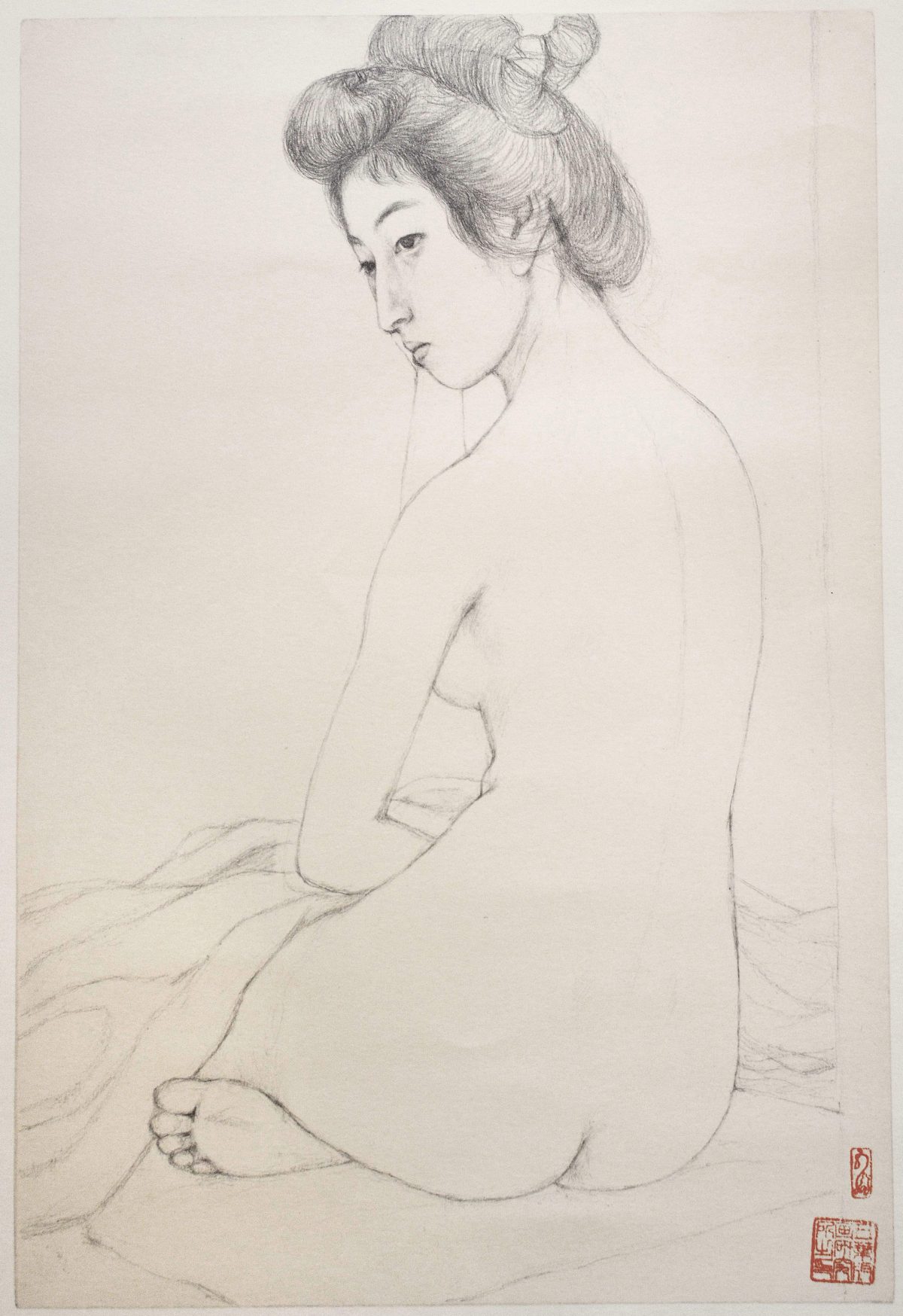
Goyo Hashiguchi, lithograph of preparatory drawing.
In 1915, urged by the shin-hanga (an art movement in early 20th-century Japan, during the Taishō and Shōwa periods, that revitalized the traditional ukiyo-e art from 17th–19th century). publisher Watanabe Shōzaburō, he designed a print for artisans to produce under Watanabe’s direction. Goyō designed “Bathing” (Yuami), Watanabe wanted to continue the collaboration but but wishing to have complete control over all the processes, he published his subsequent prints himself. He immersed himself in the techniques and functions of artisan carvers and printers. At the same time he was drawing from live models. From 1918 until his death he personally supervised the carving, printing, and publication of his own works, producing thirteen more prints – four landscapes, one nature print depicting ducks and eight prints of women. His total production, including “Bathing”, numbers fourteen prints. (After his death a few more of his designs were developed into prints by his family.)
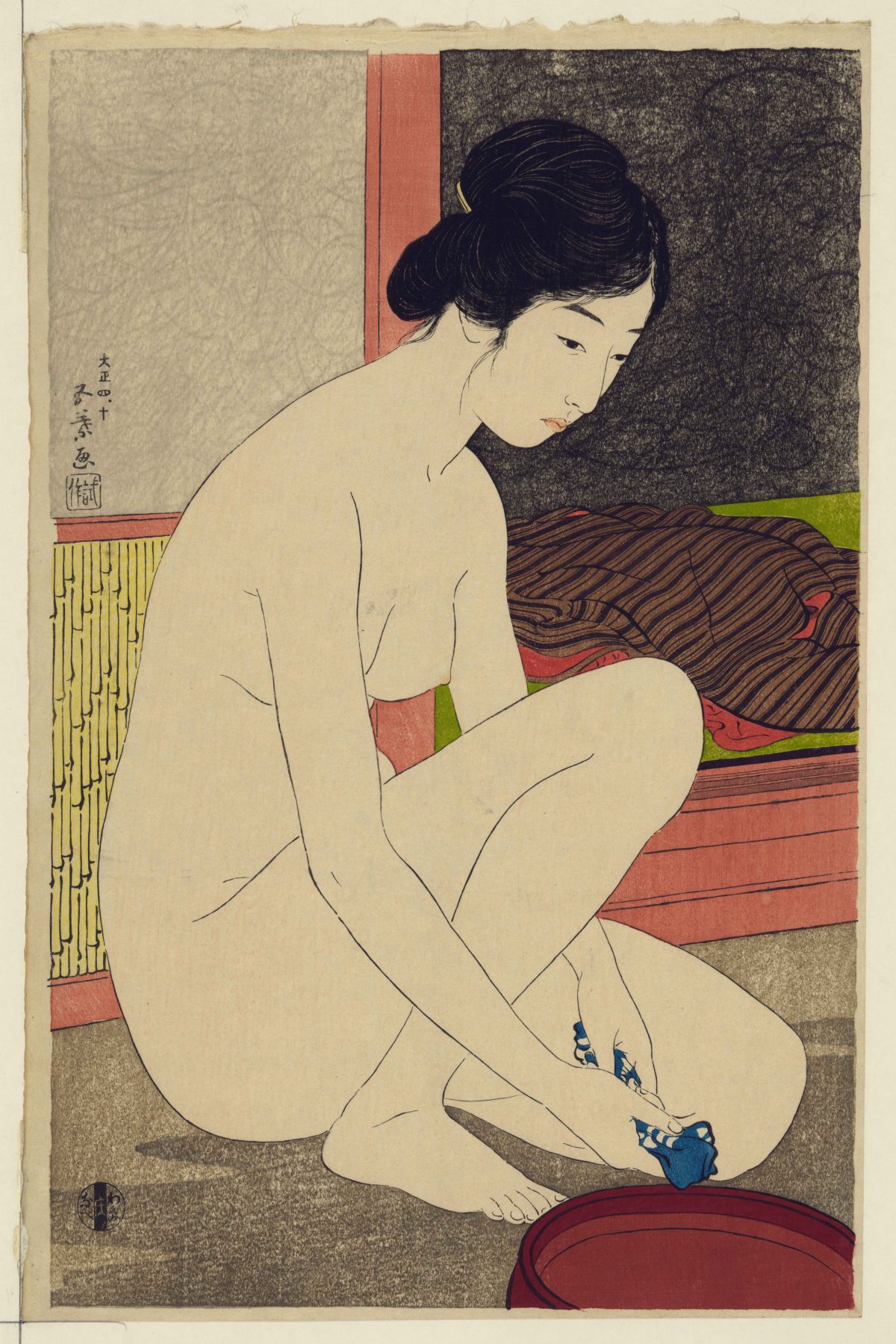
Portrait of a Japanese woman after a bath 1915 Colour woodcut print in the Shin-Hanga style Goyō Hashiguchi – buy prints.

Goyō Hashiguchi Woman Dressing 1920
High quality Prints of Goyō Hashiguchi’s beautiful art are available in the Shop.
Would you like to support Flashbak?
Please consider making a donation to our site. We don't want to rely on ads to bring you the best of visual culture. You can also support us by signing up to our Mailing List. And you can also follow us on Facebook, Instagram and Twitter. For great art and culture delivered to your door, visit our shop.
